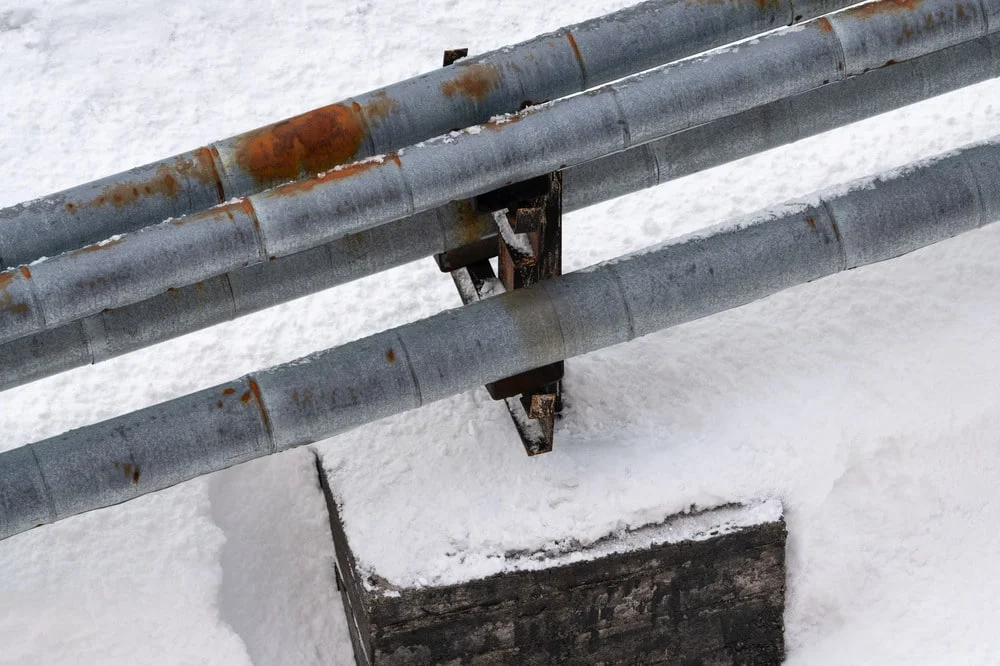
Winter brings chilly mornings, snowy vistas, and the dreaded prospect of frozen pipes. One cold snap might leave you without running water. But before you worry, it’s critical to understand the warning symptoms. How to tell if your water pipes are frozen? It’s easier than you think—as long as you know what to look for.
Frozen pipes are more than simply an annoyance; they may break, causing significant water damage. Let’s go over the telltale indicators, what to do if it occurs, and how to avoid it in the future.
How To Tell If Your Water Pipes Are Frozen?
If your pipes freeze, you will probably notice it immediately away. But occasionally, the signs are less clear. Here’s how to know if pipes are frozen and what to check for.
Test Your Faucets and Fixtures
Turn on the tap. If little or no water comes out, that’s your first red sign. Frozen pipes prevent the regular flow of water, leaving only a trickle or nothing at all. If only one faucet has this problem, there is most likely a problem with the pipe. If many taps aren’t working, you might have a bigger plumbing problem.
Inspect Exposed Pipes in Vulnerable Areas
Inspect basements, attics, garages, and external walls. These rooms have less insulation, which makes them more likely to freeze. Look for pipes that are bloated or covered in frost. That’s a clear indication that the water within is frozen solid.
Check for Condensation or Dampness Around Pipes
Thinking about how to tell if your pipes are frozen. Well, frozen pipes can cause moisture accumulation, resulting in condensation or tiny leaks. If you detect wet areas, water stains, or ice accumulating around your plumbing, it’s a sign that your pipes have frozen and require care before they explode.
Listen for Gurgling or Hissing Sounds
Water attempting to push through a partly frozen pipe may produce odd noises. If you hear gurgling, whistling, or hissing noises, ice blocks may be accumulating inside, so get a guide to prevent partly frozen pipe.
Will Water Pipes Unfreeze on Their Own?
Technically, sure, but it is not a risk worth taking. Waiting for pipes to thaw naturally might result in splits or bursts as pressure rises. If temperatures continue below freezing, the ice could last for days, raising the danger of serious damage.
To speed up the process, use mild heat.
How Long Do Pipes Take to Unfreeze?
The time required depends on the severity of the freeze, the location of the pipe, and the temperature within your home. Pipes can melt in 30 minutes to a few hours when exposed to heat. Without intervention, it might take days, which is unsuitable if you want running water.
Understanding the Risks and Potential Damage
After understanding how to tell if pipes are frozen, you must learn its risks and potential damage. Frozen pipes are more than simply an annoyance; they pose a severe risk. Ice swells within pipes, causing pressure that can result in cracks or even complete pipe breaks. If this happens, water may flood your home, resulting in costly repairs.
How to Protect Your Pipes From Freezing
Preventative maintenance is always preferable to repair. Here’s how to avoid frozen pipes.
Insulate Exposed Pipes
Use foam pipe insulation, particularly in basements, attics, and external walls. This helps to keep the temperature steady.
Seal Air Leaks
Cold breezes from doors, windows, or foundation gaps can drop the temperature surrounding your pipes. Sealing leaks keep warm air inside.
Keep Interior Temperatures Consistent
Don’t switch off the heat when leaving the house during the winter. To prevent pipes from freezing, keep the temperature at 55°F or above.
Allow Faucets to Drip During Extreme Cold
A steady trickle from faucets keeps water circulating while reducing pressure buildup, thus preventing freezing.
Disconnect and Drain Outdoor Hoses
Leaving hoses connected retains water within pipes and increases the chance of freezing. Always remove and store them before the winter.
Before connecting your water heater, always thaw frozen pipes first to prevent bursts—use a hairdryer or heat tape, never an open flame, and check for leaks before installation.
What to Do If You Suspect Frozen Pipes
If you find your pipes are frozen, act quickly to avoid harm.
Use a Hair Dryer or Heat Lamp
Apply direct heat to frozen regions, beginning at the faucet end and progressing to the obstruction.
Apply Hot Water Bottles or Rags
Wrap warm towels over pipes to defrost them gradually without causing unexpected temperature changes.
Shut Off The Main Water Supply
If you suspect a burst pipe, turn off your main water valve without any delay to avoid flooding.
Long-Term Solutions for Cold Climates
If frozen pipes are a frequent problem, try these long-term solutions.
Install Heat Tape or Heat Cables
These electric heating systems give steady warmth, preventing freezing.
Re-route Pipes to Warmer Areas
If feasible, relocate pipes away from external walls to decrease their exposure to freezing temperatures.
Upgrade Home Insulation
Proper insulation around pipes and walls may significantly improve pipe safety.
When to Call a Professional Plumber
Hope you now have the answer to how to tell if pipes are frozen. If your pipes remain frozen despite your attempts, it is essential to contact a plumber. Professionals have specialized instruments, such as pipe-thawing devices, and can look for concealed damage.
Wally Blanton Plumbing Inc. specializes in frozen pipe repair, burst pipe solutions, and winter plumbing maintenance. Don’t allow frozen pipes to ruin your day; call us immediately for prompt, dependable assistance!
